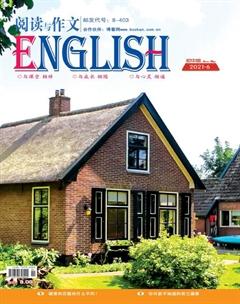新概念英语语法讲解:倒装句

知识要点:
英语的基本语序是“主语+谓语”。如果将谓语的全部或一部分放在主语之前,这种语序称为“倒装”。
一、倒装的类型
1.完全倒装:整个谓语移至主语之前。
Out rushed the students to welcome the foreign friends.
2.部分倒装:只把系动词,情态动词,助动词或表语放在主语之前。
Seldom does he go to school late.
二、倒装结构的基本用法
1、由于语法结构的需要而使用的倒装
1) 疑问句中,用完全或部分倒装,但以疑问词或疑问词修饰的名词作主语的疑问句要用正常语序。
Where did he go last Monday?
Are you listening to the radio?
2)“there be”结构中,There are three wells in our village.
There stands a big paper making factory by the river.
3) 在以here, there, now, then, in, away, up down等副词开头的句子中,使用完全倒装结构。但如果主语是代词则用正常语序。
There goes the bell.
Now comes your turn to play
Down she went.
4) 在以neither nor 或no more开头的句子中,表示“……也不这样”, neither和nor意思相同,可以替换使用;no more表示动作的程度并不比前面提到的稍强,意为“也不……”。
I cant swim, nor (neither) can she.
He hasnt been to the countryside, neither does he want to go there.
He did not turn up. No more did his wife.
5) 用在as(尽管)引导的让步状语从句中,从属连句as用于特殊语序,含义与though, although相同,但“as”这种结构可表示非常强烈的对照,必须用倒装(表语提前)。
Proud as the nobles are, he is afraid to see me.
Young as he is, he knows a lot.
2、为了加强语气而使用的倒装。(使句子更加流畅,更加生动)
1) 含有否定意义的副词或连词放在句首时,常用否定词有:never, not, hardly, scarcely, seldom, little, not until, not only…but also, no sooner …than, hardly (scarcely)…when等。一般主句用部分倒装结构。
Never before have we seen such a sight.
Little did I think that he could be back alive.
Not until New Years Day shall I give you a gift.
Not only was everything that he had taken away from him, but also his German citizenship.
2) 副詞only放在句首时,only 起强调作用,其句型为“only +状语+部分倒装”。如置于句首的only修饰主语,则不用倒装结构。
Only then did he realize his mistakes.
Only in this way can you learn maths well.
Only Mother can understand me.
3) 虚拟语气条件从句中,把从句中if省略将were,had或should放在主语的前面。
Were they here, they would help us.
Had I been informed earlier. I could have done something.
Should you fail, take more pain and try again.
4) 直接引语的全部或一部分放在句首时,主句主语和谓语次序颠倒,用完全倒装。但如果主句主语为代词时或谓语部分比主语长,一般不用倒装。
“He is a clever boy.” said the teacher.
“Go, Dick, go!” cried Tom, “Go home and get help.”
“What do you think of the film?” he asked.
“Im leaving for Hongkong next month.” Mary told me yesterday.
5) 表示祝愿的句子中,谓语动词或谓语的一部分放在主语的前面。
May you succeed!
Long live the Communist Party of China.
6) 副詞so在句首,表示前面所说的情况也适合于另一个人或另一事物的肯定句中。
He is interested in pop-songs, and so am I.
They will learn chemistry next term, so will I.
I can drive a car, so can my younger brother.
如果后面的句子只是单纯重复前句的意思,不表示也适用于另一人或事,则不用倒装结构。
—Tom won the first prize for the English competition.—So he did.
—It was cold yesterday. —So it was.
7) 在频度状语often, always, many a time等开头的句子中。
Often did we warn them not to do so.
Many a time has she helped me with my English.
8) 在方式状语thus开头的句子中及程度状语so放句首。
Thus ended his life.
So loudly did he speak that even people in the next room could hear him.
9) 介词短语作状语,放在句首。
In the middle of the room stood a little girl.
In the distance was a horse.
10) 在强调表语的句子中,表语提前,不仅为了强调,而且为了使句子结构达到平衡协调,或使上下文紧密衔接。
Such was Albert Einstein, a simple man of great achievements.
Such is life.
Nearby were two canoes in which they had come to the island.

